23+ SAMPLE Affidavit of Name
-
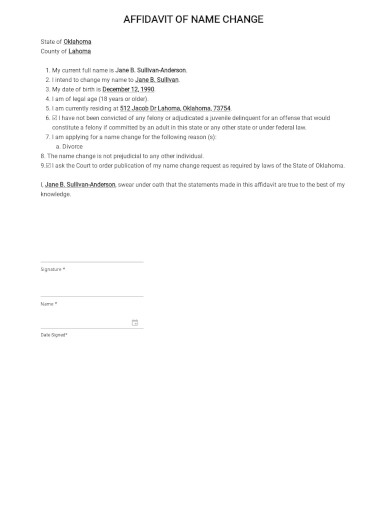
Affidavit of Name Change Template
download now -
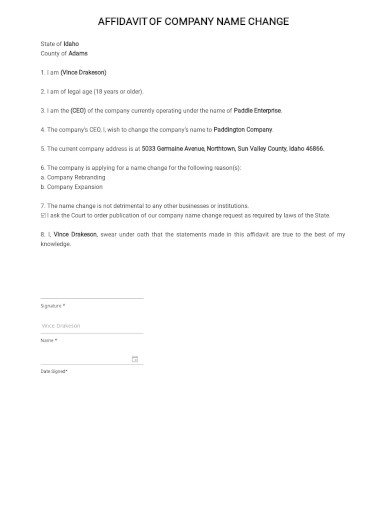
Company Name Change Affidavit Template
download now -
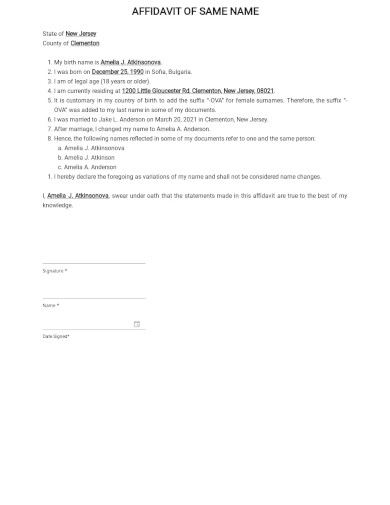
Affidavit of Same Name Template
download now -
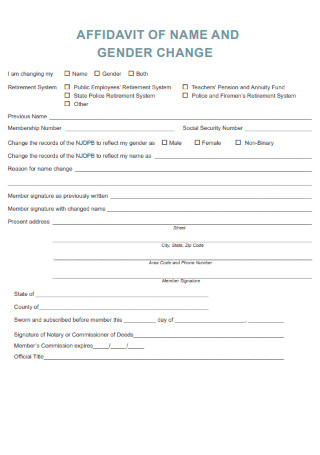
Affidavit of Name Notarized & Gender Change
download now -
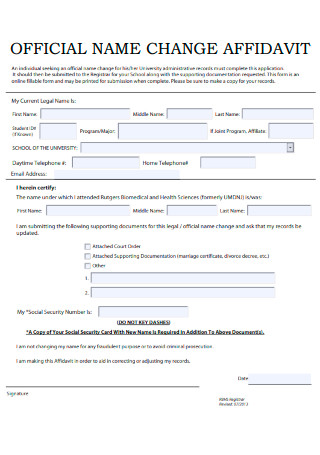
Official Sworn Name Change Affidavit
download now -
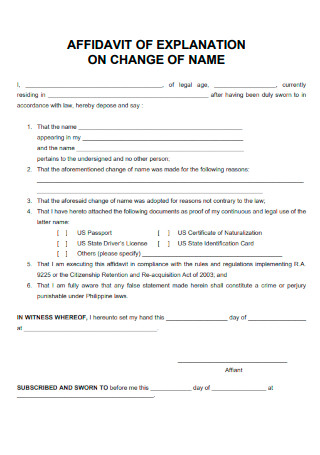
Affidavit of Explanation Court on Change of Name
download now -
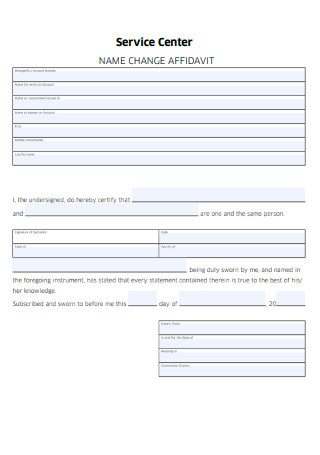
Service Center Name Change Same Person Affidavit
download now -
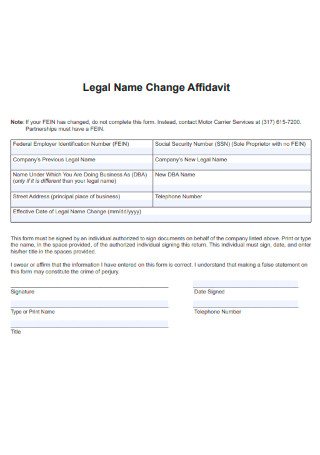
Legal Name Change Birth Certificate Affidavit
download now -

Affidavit to Correct Name Spelling Mistake or Gender of Parent
download now -
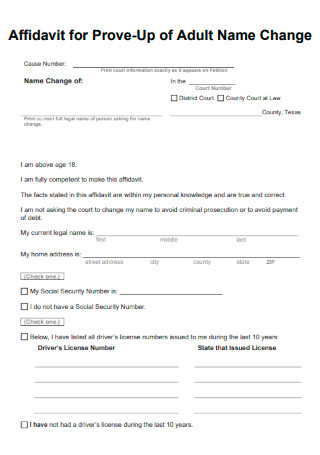
Affidavit for Joint Prove Up of Adult Name Change
download now -
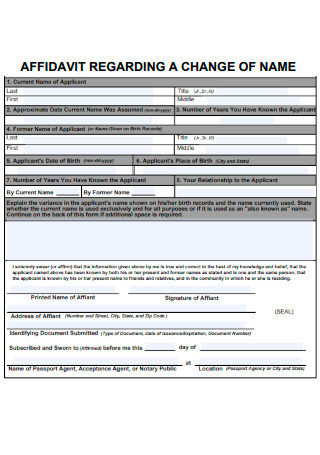
Affidavit Regarding a Change of Name
download now -
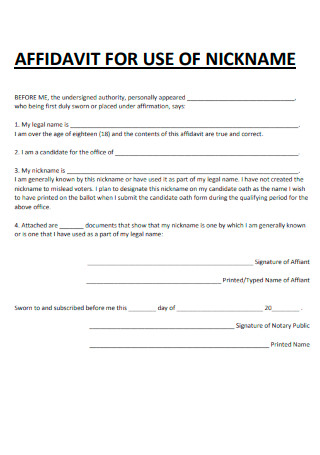
Affidavit Discrepancy for Use of Nick Name
download now -
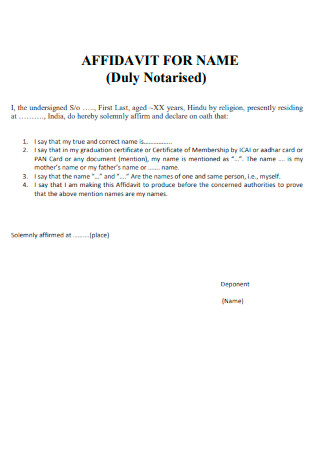
Affidavit Identification for Name Duly Notarised
download now -
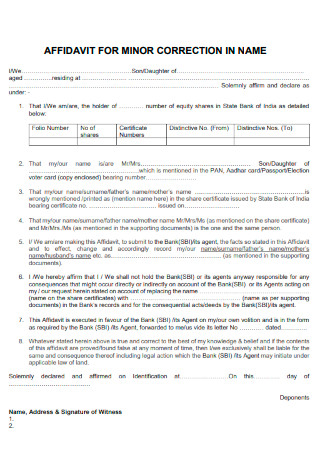
Affidavit for One Minor Correction in Name
download now -
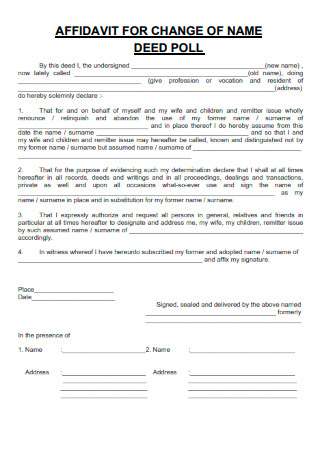
Affidavit for PassportChange of Name & Deed Poll
download now -
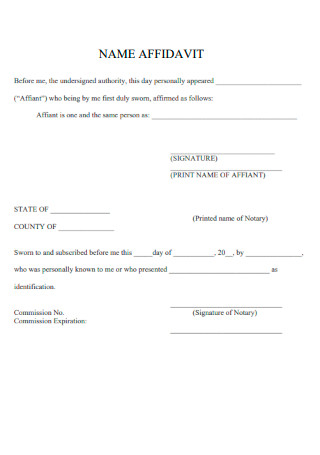
Sample Clarification Affidavit of Name
download now -
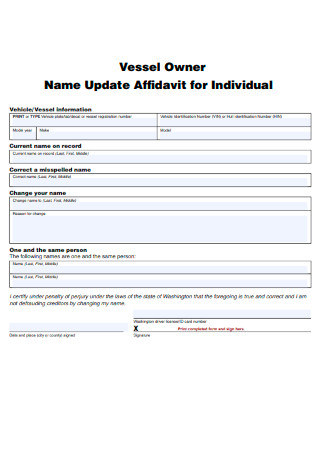
Vessel Owner Name Update Identity Affidavit for Individual
download now -
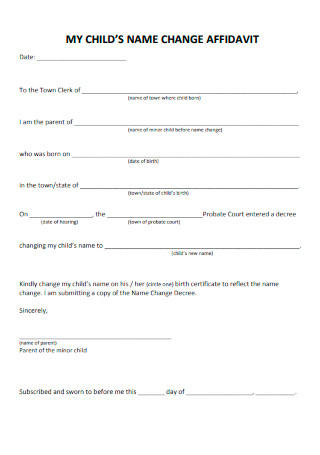
My Child Name Witness Change Affidavit
download now -
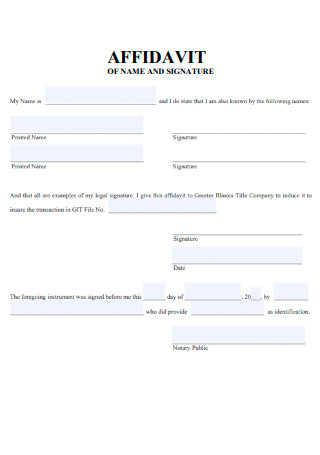
Vehicle Affidavit of Name and Signature
download now -
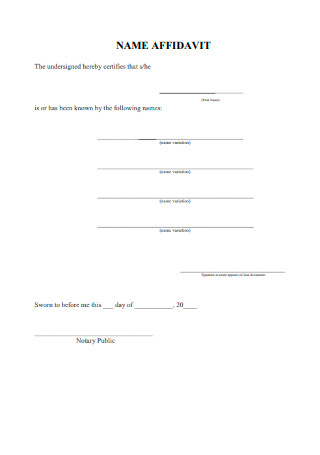
Basic Affidavit Middle Name
download now -
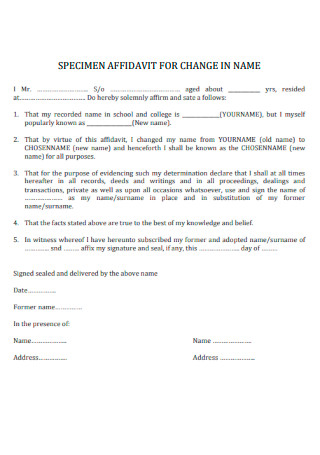
Specimen Corporation Affidavit for Change in Name
download now -
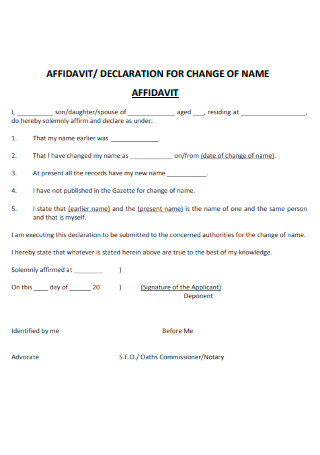
Affidavit & Declaration Statement for Change of Name
download now -
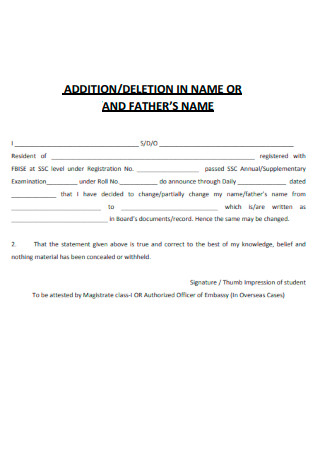
Affidavit Addition & Deletion in Name or Fathers Name
download now -
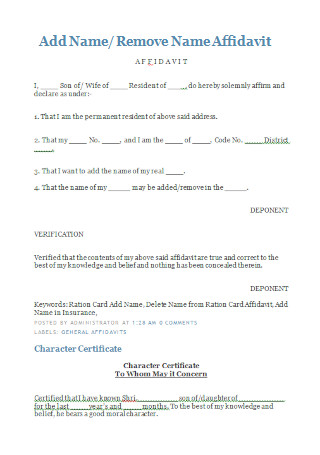
Add Name or Remove Name Affidavit
download now
FREE Affidavit of Name s to Download
23+ SAMPLE Affidavit of Name
What Is an Affidavit of Name?
What’s Inside an Affidavit of Name?
Reasons Why People Change Their Name
Steps in Legally Changing Your Name
FAQs
Is an affidavit of the same name similar to an affidavit of a name change?
How much does it cost to have a name change?
Is a name change possible under common law marriage?
What Is an Affidavit of Name?
Before we define the affidavit document that relates to this topic, what is the meaning of a name change? Well, simply defined, a person’s legal act of acquiring a new name that differs from their present name is known as a name change. It can be a simple or a complicated and time-consuming procedure, depending on the location where the person seeks to change their name. When someone successfully changes their name, they may use it for all transactions and record verification. Changing one’s name is typically distinct from choosing a pseudonym, which solely serves to disguise one’s identity for various reasons.
Additionally, whenever someone has their name successfully changed, and if he/she is due to appear before the authority for verifying their identity, a legal document such as an affidavit of name then comes into play. This document, also known as an affidavit of a name change, is a sworn declaration used to validate a person’s identification when they need to verify that they have changed their name. This document might be useful for anyone who uses a name that has not been legally changed by a court or via marriage. This document can also be used if the person has just gotten married, divorced, or legally changed their name and requires extra proof. Another person, ideally a relative by blood, who has firsthand knowledge of the subject will fill out the affidavit using both his or her legal name and his or her chosen name.
What’s Inside an Affidavit of Name?
Here are the key components that make up an affidavit of name/name change:
Reasons Why People Change Their Name
Listed and discussed below are some of the reasons why some individuals have their name changed/choose to have their name changed:
Steps in Legally Changing Your Name
Here are the steps that should be followed whenever you want to have your name changed; It is not necessarily a difficult process, however, depending on the reason, a lot of time can be involved.
1. Visit a Local Clerk of Court
When an individual needs to have their name changed, this is the first step that should be done. Going to the local clerk’s office is the first step in the process of changing a name. This step is required since a trip to the local clerk’s office will determine whether or not a lawyer is required for the name change process. Typically, the local clerk’s office will provide an individual with the necessary self-help material so that the name change procedure may be completed without the assistance of a lawyer. In the trip to the local clerk’s office, things such as valid identification, proof of residency, and money for charges will be needed.
2. File a Petition for Change of Name
After visiting the local clerk, the next step to be performed during the name change process would be to file the petition document. The petition for a name change is the main document needed to make a request for a name change. Depending on where the person lives, this paperwork can be physically mailed or submitted electronically. Once the form and accompanying paperwork have been completed, the documents must be inspected at the local clerk’s office. If a mistake is made when filling out the form, a quick visit could save a lot of time and headache.
3. Set a Date
Whenever the filing process for the petition for a name change has been completed, this step will then follow. The municipal clerk will often set a court date for the person to state the reason or reasons for changing their name. Depending on the place, the court will normally set a date for the hearing within 4-6 weeks after receiving the petition. It may seem like a long time to wait for a very minor court appearance. This is because, in most situations, the individual will need to complete certain tasks prior to the court hearing, and the extended wait will provide ample time for him or her to do so.
4. Publication of the New Name
After the local clerk issues the date on which the individual is due to appear in court, this is the next step that follows. The necessity to publish the new name change in the local newspaper is something that almost all areas require. Calling the local newspaper and asking about the cost of publishing is always a smart idea. Additionally, depending on the place, the local clerk may provide the right paperwork for publication in the newspaper. A copy of the name change petition form is also required. When it’s done, save the newspaper advertisement for a future court date.
5. Appear in Court and Sign the Decree
This serves as the last step in changing names. When going to court, the applicant should carry all of the essential paperwork and come early. If the court grants the application, the applicant will receive a decree and sign it, which is the most significant document since it allows them to change their name on all of their most sensitive papers, such as their passport, driver’s license, and certificate of birth.
FAQs
Is an affidavit of the same name similar to an affidavit of a name change?
No. This is because an affidavit of a name change is used to verify that an individual has had their name previously while an affidavit of the same name is used to identify individuals who hold several names or new names. The person who has this affidavit of the same name certifies that the person who holds this document has many names or a new name.
How much does it cost to have a name change?
The cost of a name change varies depending on the state and the process required. It is frequently inexpensive for very simple tasks. One thing to keep in mind is that the prices often build-up following the name change, with items like a new driver’s license, social security card, and passport all costing money to replace.
Is a name change possible under common law marriage?
Yes, it is possible although the process can be a bit complicated since only a handful of places still recognize this type of marriage. Because there is no official ceremony in a common-law marriage, couples often search for alternative means to legalize their relationship. Using the same last name as the husband is one of the simplest ways to feel very much like a married pair. Unlike a legal marriage, where partners may easily alter their last names, the process for common-law spouses is a little more difficult. For example, if someone wants their driver’s license adjusted to reflect their new name, they need to make a petition with the court and show that they have completed all of the required measures to fulfill the legal criteria.
Different reasons exist for an individual to change their names. But whatever the reason may be, an affidavit of name change is always required whenever the individual needs to appear to the court to verify that they’ve had their name changed. Drafting and filling out this document is usually not a time consuming process, however, should you find it to be complex, there are plenty of sample templates available in this article that can help.
